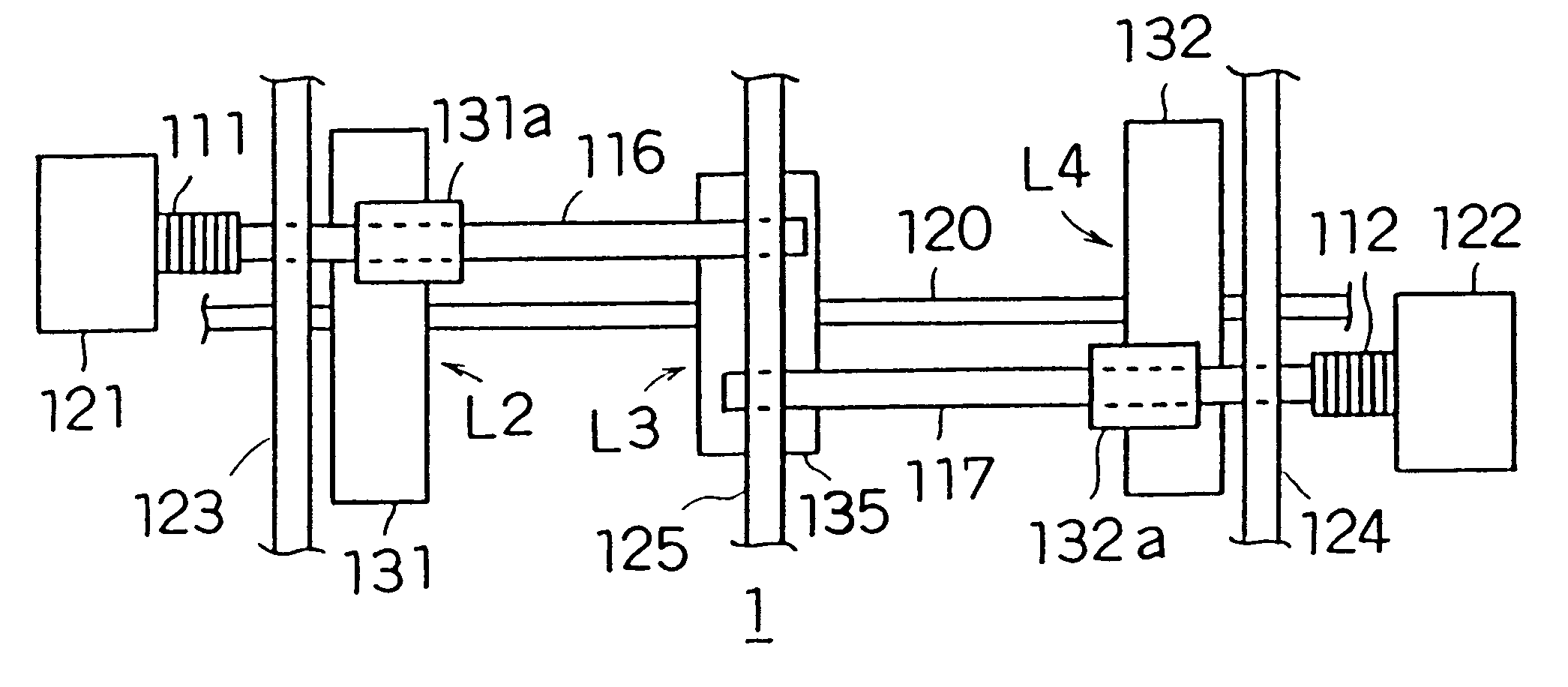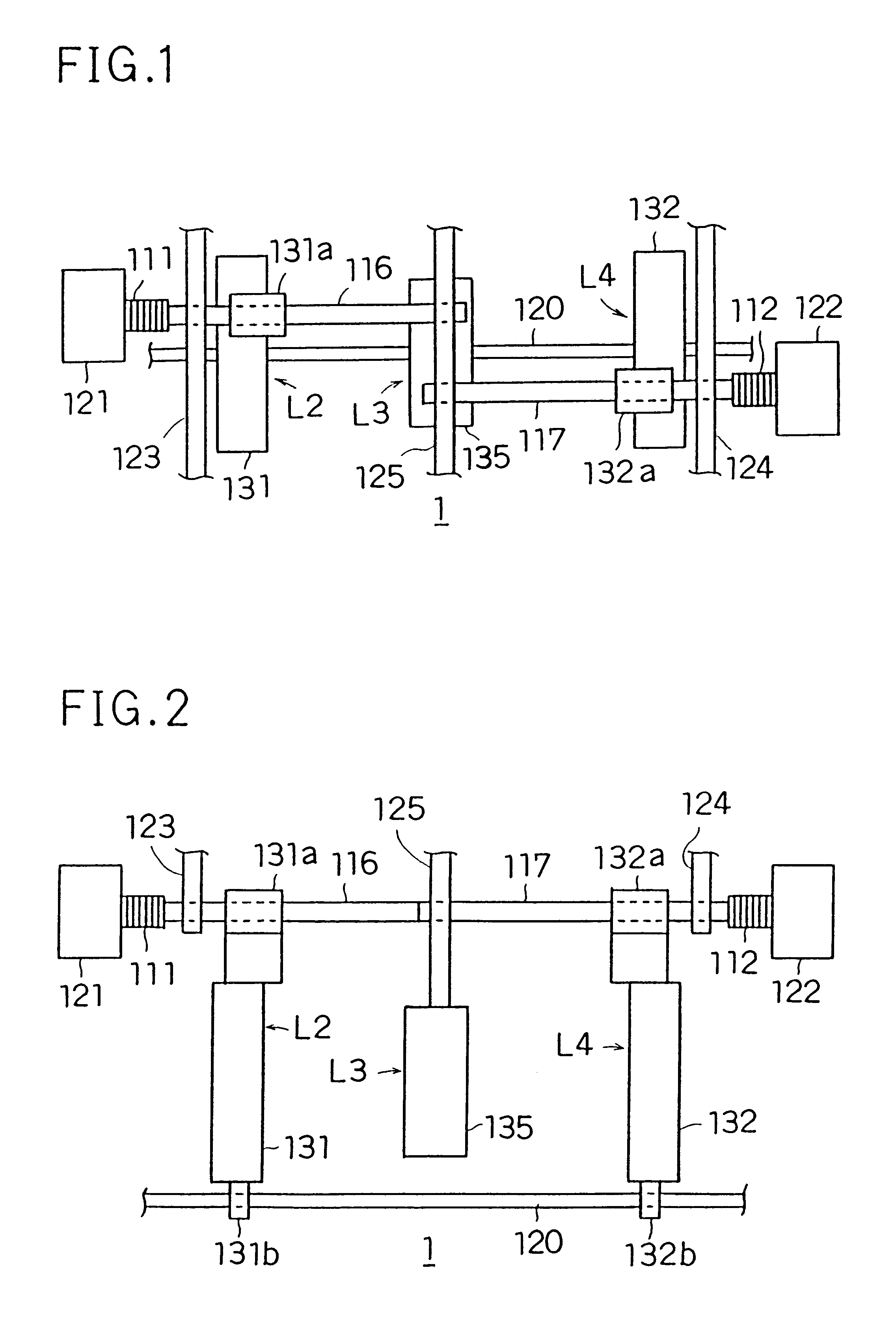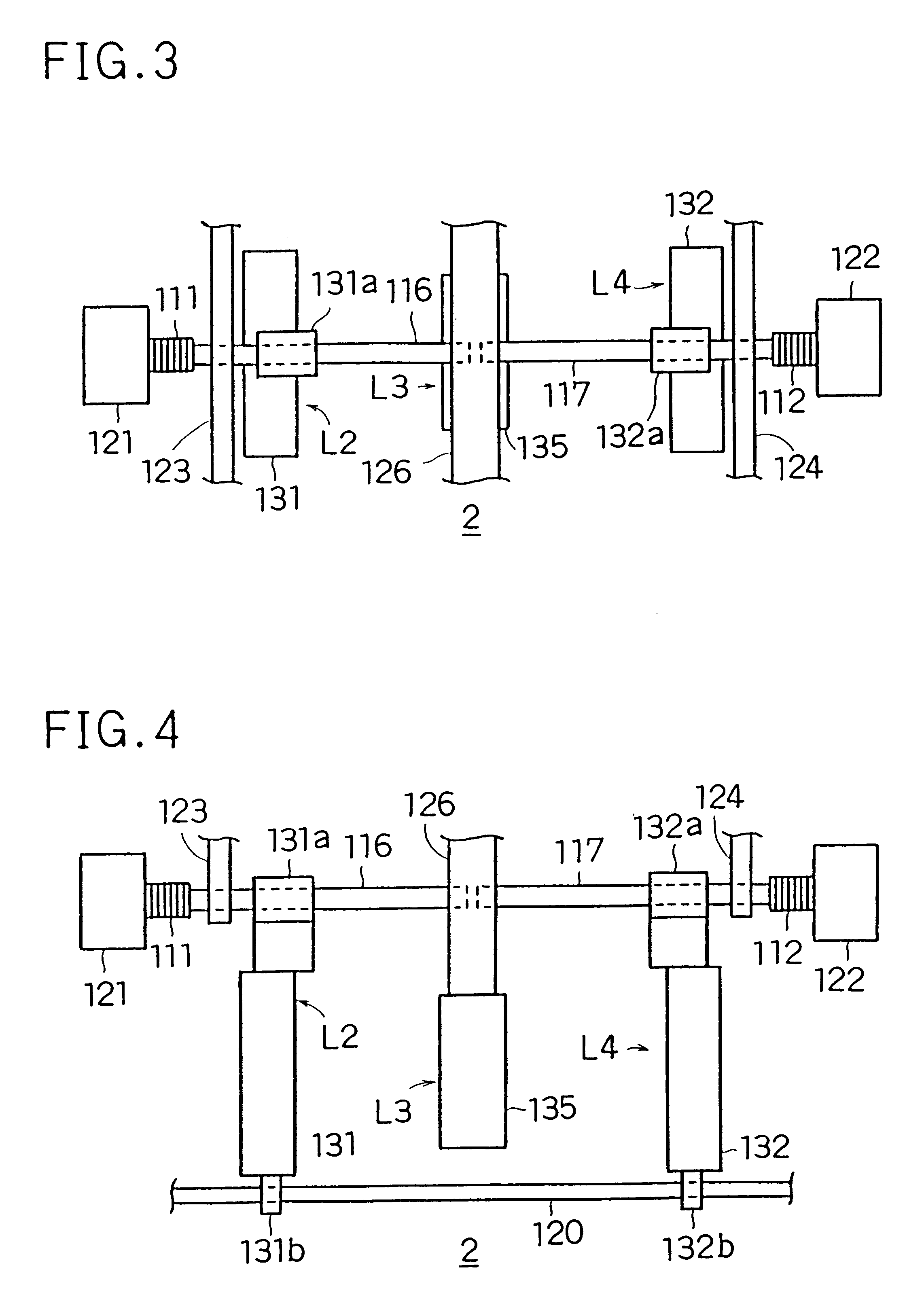Driving device
- Summary
- Abstract
- Description
- Claims
- Application Information
AI Technical Summary
Benefits of technology
Problems solved by technology
Method used
Image
Examples
first embodiment
Hereinafter, driving devices embodying the present invention, as applied to driving of the taking lens of a camera, will be described with reference to the accompanying drawings. The driving device of a first embodiment is for driving a zoom lens system composed of four lenses as shown in FIG. 9. In this zoom lens system, the first and third lenses, L1 and L3 are fixed, and the second and fourth lenses L2 and L4 are movable. The relationship between the focal length and the positions of the individual lenses is shown in FIG. 10. The lenses L2 and L4 are movable through several millimeters.
A plan view and side view of the driving device 1 of the first embodiment, for driving the second and fourth lenses L2 and L4, are shown in FIGS. 1 and 2, respectively. Note that the first lens L1 is not shown in these figures. The driving device 1 is provided with two piezoelectric actuators 111 and 112 serving as driving elements, two driving rods 116 and 117, one guide rod 120, two base blocks 1...
second embodiment
A plan view and a side view of the driving device 2 of a second embodiment are shown in FIGS. 3 and 4, respectively. This driving device 2 is also for driving the second and fourth lenses L2 and L4 of the zoom lens system shown in FIG. 9. However, this driving device 2 is different from the driving device 1 in that, in this driving device 2, the first and second driving rods 116 and 117 are arranged on the same line. The supporting wall 126 for supporting the tip-end portion of the driving rods 116 and 117 is made thicker than the previously described supporting wall 125, and has only one through hole that is shared to support the tip-end portion of the driving rods 116 and 117. The tip end of the driving rod 116 and the tip end of the driving rod 117 are placed several hundred micrometers or more apart from each other, so that they do not come into contact with each other.
By arranging the driving rods 116 and 117 on the same line in this way, it is possible to make the space occupi...
third embodiment
The driving device of a third embodiment is for driving a zoom lens systems composed of three lenses as shown in FIG. 11. The first, second, and third lenses L1a, L2a, and L3a are all movable. The relationship between the focal length and the positions of the individual lenses is shown in FIG. 12.
A plan view and a side view of the driving device 3 of the third embodiment are shown in FIGS. 5 and 6, respectively. This driving device 3 provided with, in addition to the piezoelectric actuators 111 and 112 and the driving rods 116 and 117 arranged on the same line, another piezoelectric actuator 113 and another driving rod 118. The driving rod 118 is arranged parallel to the driving rod 116, and the piezoelectric actuator 113 is, together with the piezoelectric actuator 111 and the driving rod 116, the second lens L2a is driven by the piezoelectric actuators 113 and the driving rod 118, and the third lens L3a is driven by the piezoelectric actuators 112 and the driving rod 117.
The lens ...
PUM
 Login to View More
Login to View More Abstract
Description
Claims
Application Information
 Login to View More
Login to View More - R&D
- Intellectual Property
- Life Sciences
- Materials
- Tech Scout
- Unparalleled Data Quality
- Higher Quality Content
- 60% Fewer Hallucinations
Browse by: Latest US Patents, China's latest patents, Technical Efficacy Thesaurus, Application Domain, Technology Topic, Popular Technical Reports.
© 2025 PatSnap. All rights reserved.Legal|Privacy policy|Modern Slavery Act Transparency Statement|Sitemap|About US| Contact US: help@patsnap.com



